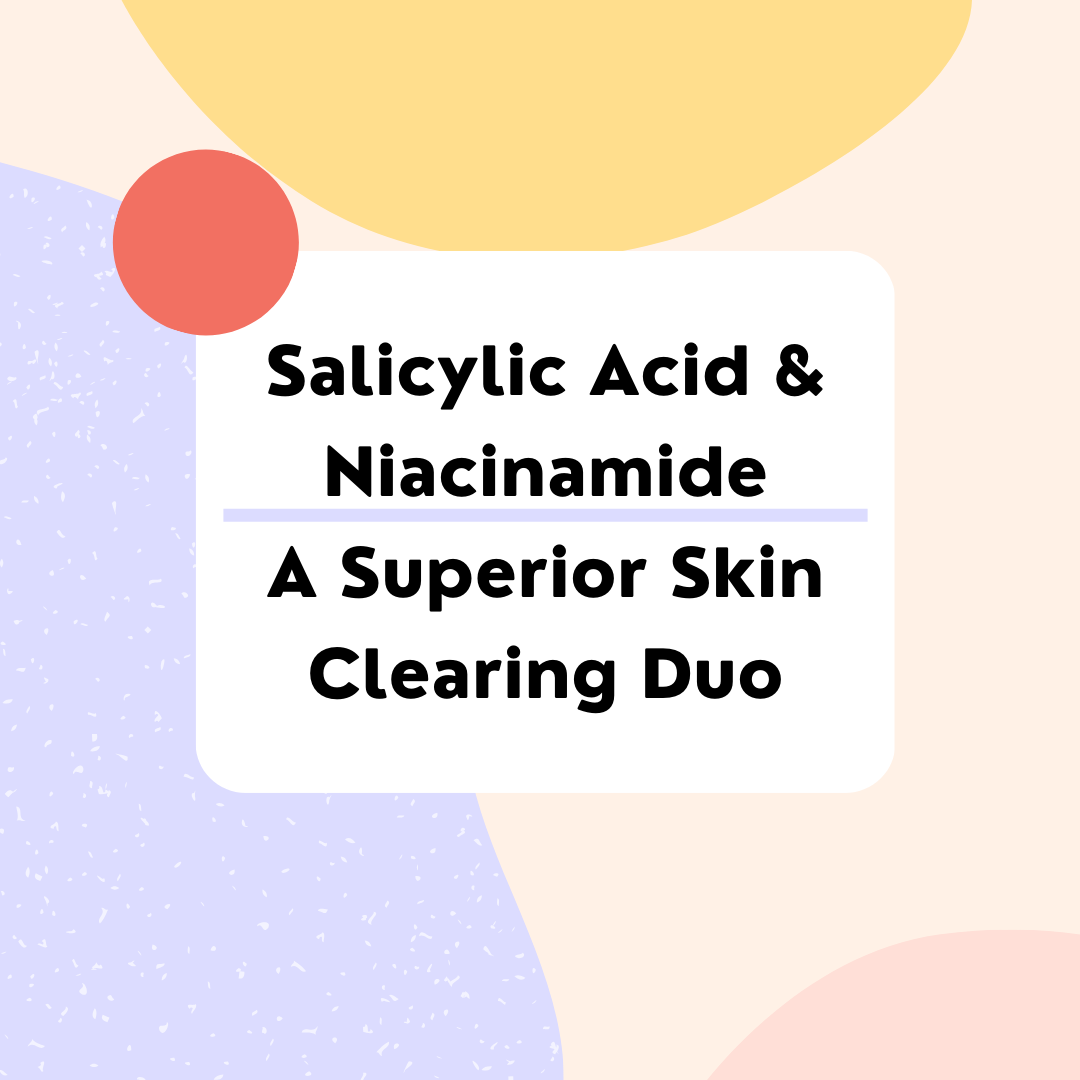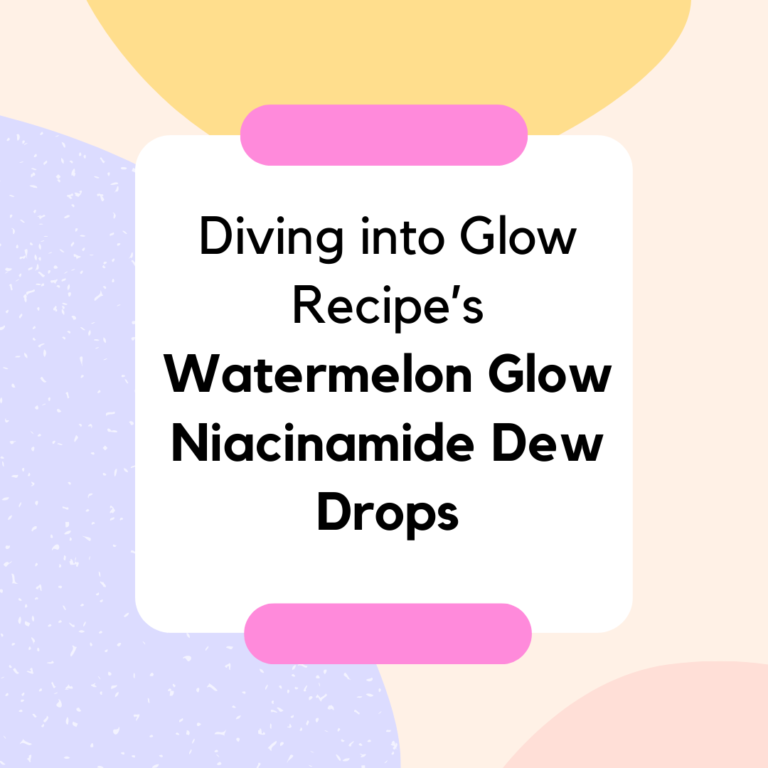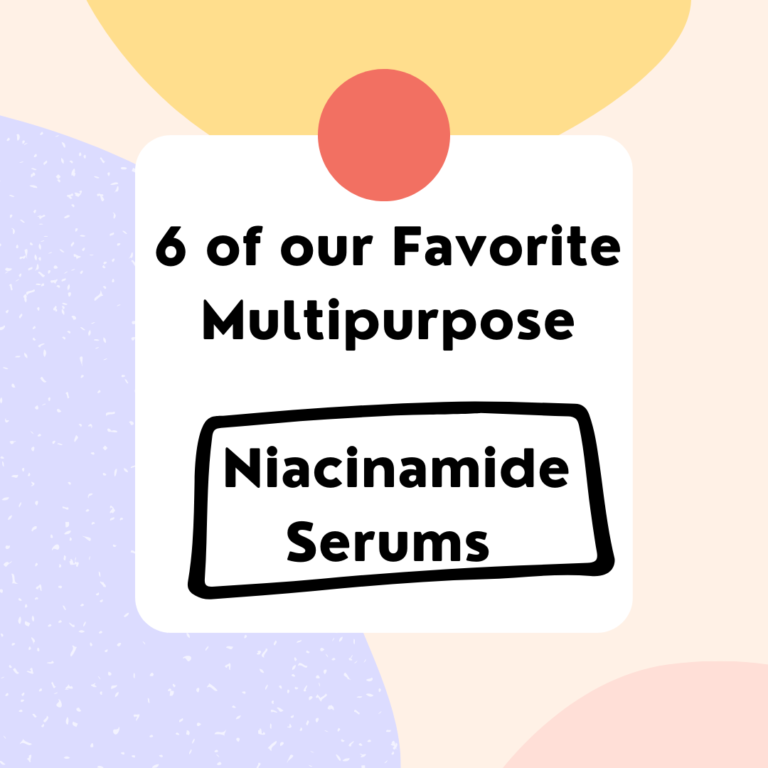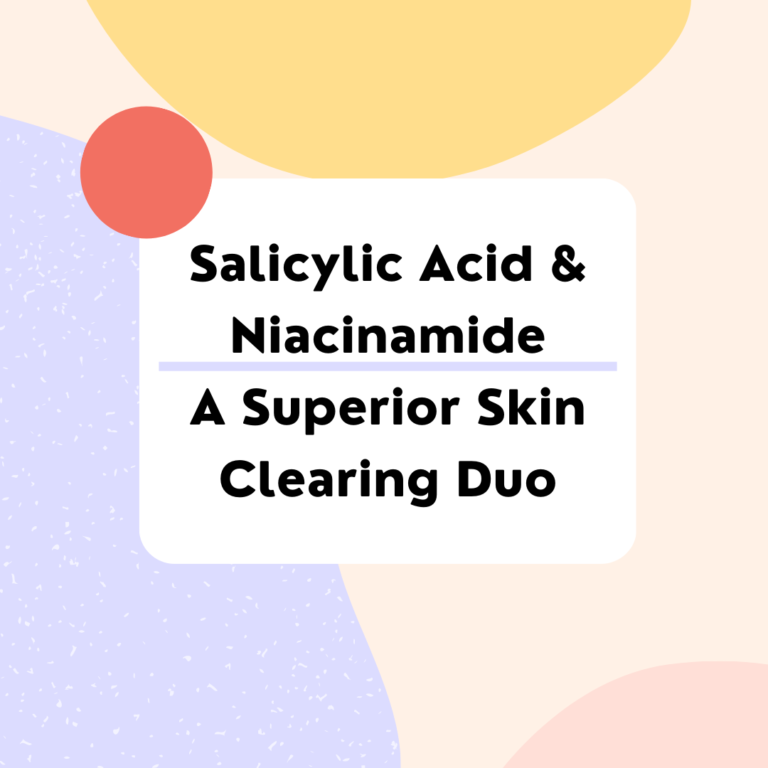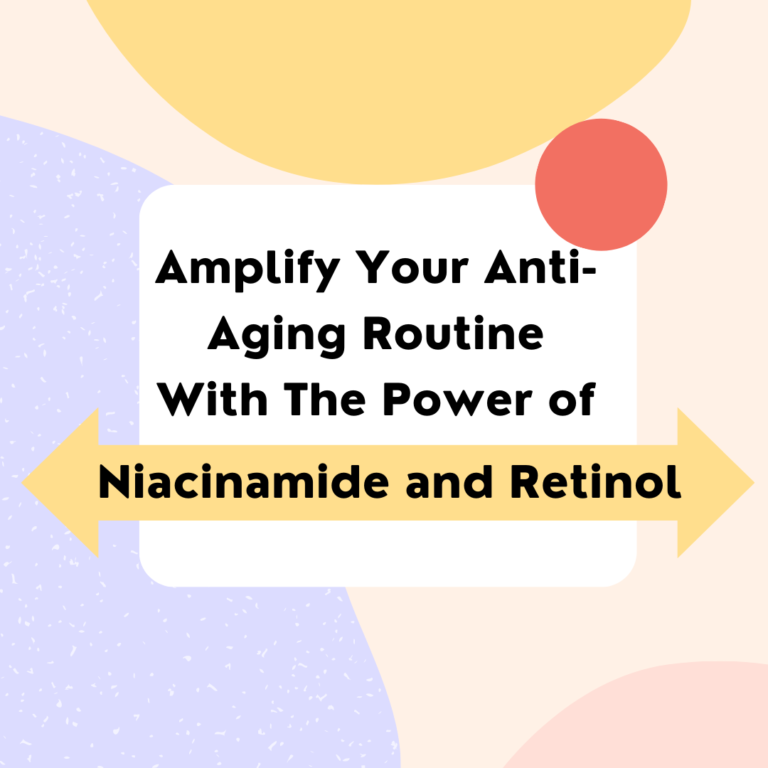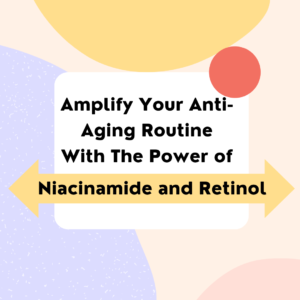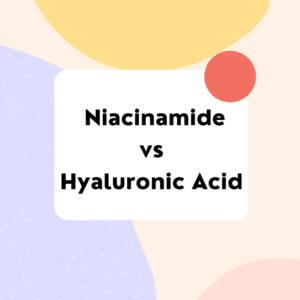If you have been looking into chemical exfoliants, we’re here to tell you that we have a solution. Two ingredients you might already know about, salicylic acid and niacinamide, actually work together in perfect harmony. Salicylic Acid has definitely earned its stripes in the skincare world as a breakout buster and acne annihilator, and is commonly found in acne treatments and cleansers. It belongs to a class of substances called BHA’s (Beta Hydroxy Acids) which are mild acids that are used on the face because they can sneak just beneath your skin’s outermost surface layer to give your pores a deep clean. Not only does this ingredient promise superb exfoliation that doesn’t disrupt your skin’s natural barrier, but it is extremely effective when paired with our superhero-niacinamide. If a clear, even, glowing complexion is something you want, then read on to see how salicylic acid can help you out.
Table of Contents
ToggleWhat is Salicylic Acid?
Salicylic acid is a Beta Hydroxy Acid (BHA), known well for its acne and breakout fighting benefits. The way it works is through its ability to trigger the skin’s natural exfoliating process. SA penetrates deep into the oil glands and hair follicles of your skin to loosen built up oils, sebum and any other debris that’s clogging your pores. Salicylic acid works to not only exfoliate the surface and rid your face of built up dead skin, but it also works within your pores to dissolve excess oil and sebum trapped under your skin that leads to clogged pores and breakouts. You can find that SA is most effective at clearing your complexion and helping smooth over rough, bumpy, textured skin. This ingredient is extremely effective at clearing troubled skin, ridding it of pesky blackheads, whiteheads, excess oil, pimples and mild to moderate acne. Due to its exfoliative properties, SA can even be beneficial if you struggle with psoriasis because it constantly buffs away dead skin. You can find salicylic acid in many different acne fighting treatments as well as gels, lotions, creams, moisturizers, serums and cleansers.
What is a BHA?
Salicylic Acid falls in the class of BHA’s. BHA stands for Beta Hydroxy Acid, and is a group of acids that are oil-soluble, meaning that they can penetrate deep into your skin’s hair follicles and pores to dissolve oils, sebum, and any other debris that is clogging your pores. They are capable of getting beneath the surface layer to do more than just exfoliating the skin, they give it a deep clean. AHA’s are the other group of chemical exfoliants commonly confused with this group. AHA stands for Alpha Hydroxy Acid and a key difference between this group and BHA’s is that they are water soluble, not oil soluble. While AHA’s can exfoliate extremely effectively, they cannot dissolve oils and sebum.
Common Misconception: Glycolic Acid vs Salicylic Acid
These 2 ingredients get confused for one another so much we decided to break them down to help you understand the differences between them! You might have already heard of the ingredient glycolic acid because it’s also another popular player in the skincare world. The main difference when comparing glycolic acid vs salicylic acid is that salicylic acid is a BHA and glycolic acid is an AHA. Glycolic acid is highly beneficial when it comes to exfoliating surface skin and getting rid of pigmentation, scarring and signs of aging. However, GA is also a lot more intense on the skin than salicylic acid, so if you’re looking for a less irritating chemical exfoliant, stick with SA.
BHA’s: Test Your Skin’s Tolerance
Before incorporating salicylic acid into your routine, it’s a good idea to test your skin’s tolerance to it because everyone has different levels of skin sensitivity to chemical exfoliants. If you are just starting out, you should use a basic concentration of salicylic acid 2 percent or less. You will find that most products on average contain salicylic acid 2 percent or lower, as this percentage is the sweet spot of efficiency and safety for your skin. However, still make sure you read those labels to make sure! Also, test your skin’s tolerance to the SA product you chose for 1-2 weeks before deciding to increase the frequency of use.
Can I Use Salicylic Acid with Niacinamide?
You will find that salicylic acid and niacinamide are extremely compatible and love being paired together. Salicylic acid works to cleanse your skin’s pores and leave you with deep gentle exfoliation, while niacinamide repairs the skin from underneath. Niacinamide basically shuts the door to your skin, further preventing pore-clogging substances from entering your freshly cleaned pores. Niacinamide also works in the longterm to control oil production and shrink pores, leaving the skin less susceptible to breakouts and clogged pores over time. By mixing salicylic and niacinamide, you also reduce your skin’s sensitivity and build its tolerance to the acid because your skin barrier is strengthened by the niacinamide. The reduction in sensitivity is especially helpful if you are using a higher concentration to fight acne or more severe breakouts that require a more rigorous treatment style.
How to Use Salicylic Acid and Niacinamide Together
Sometimes salicylic acid and niacinamide are included within the same product and formulated together, but you can also buy separately formulated products as well. We recommend that you start out using salicylic acid and niacinamide separately and apply at different times. For example, apply niacinamide in the morning and salicylic acid at night. Increase frequency of use every 1-2 weeks to give your skin time to adjust and you can begin using the 2 ingredients together around 3 weeks after you introduce both into your routine. Think of it like you’re conditioning your skin to handle the salicylic acid by applying niacinamide. The side effects are most likely minimal, but to be safe it’s always best to slowly introduce any beta hydroxy acid into your routine as a general rule of thumb. After testing out your skin’s tolerance to salicylic acid, then couple it with the antioxidant for best results.
Benefits of Using Salicylic Acid and Niacinamide Together
By using a beta hydroxy acid alongside vitamin b3 you really get the best of both worlds. The result of using these two together is skin that is clearer, brighter, healthier, less congested, less texturized and stronger. Over time, you will see diminished signs of aging due to the exfoliation of the salicylic acid as well as the hydration and barrier strengthening provided by the vitamin b3. SA can greatly help rid your face of breakouts, reduce acne, and calms inflammation. Salicylic acid and niacinamide also share overlapping pore-shrinking and oil controlling properties that will leave your pores clean and visibly smaller. Both ingredients are safe for all skin types, but this pair is especially helpful to those prone to excess oil production and congested pores.


